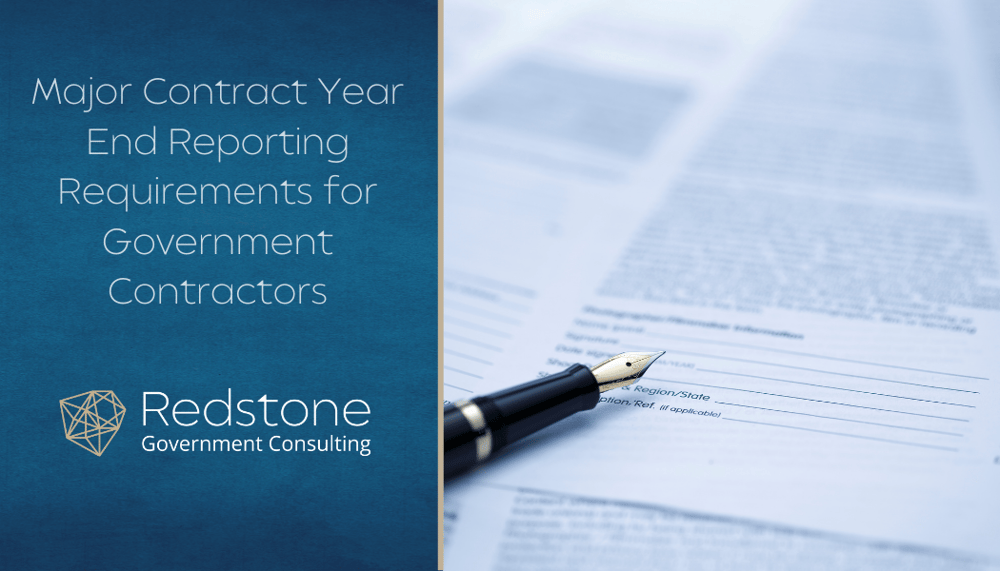
As the fiscal year draws to a close, government contractors are gearing up to meet their year-end reporting requirements. Navigating the maze of regulations and clauses can be daunting, but with a clear understanding, the process becomes manageable. This article aims to shed light on the major contract reporting requirements for all government contracts.
Service Contract Reporting: Decoding the FAR Clauses
If you're a contractor with the Federal Acquisition Regulation (FAR) clauses in your contract, specifically FAR 52.204-14 and FAR 52.204-15, you'll need to be aware of the Service Contract Reporting Requirements. Updated in October 2016, these clauses mandate contractors to report specific service contract data on SAM.GOV for each applicable contract.
Reporting Period: The data should span the government fiscal year, from October to September.
What Prime Contractors Need to Report:
- Contract and Order Numbers: This includes the contract number and, if relevant, the order number.
- Invoiced Amount: The total dollar amount invoiced for services provided during the previous Government fiscal year.
- Direct Labor Hours: The number of Contractor direct labor hours used for the services during the previous Government fiscal year.
Additionally, contractors should be aware of the reporting thresholds. For each contract, subcontractor details are also required:
- Subcontract Details: This encompasses the subcontract number, the name of the subcontractor, and their unique entity identifier.
- Subcontractor Direct Labor Hours: The number of first-tier subcontractor direct-labor hours used for the services during the previous Government fiscal year.
Electronic Subcontracting Reporting System (ESRS): Understanding FAR 52.219-9
For contracts that list FAR 52.219-9, the Electronic Subcontracting Reporting System (ESRS) comes into play. With certain exceptions (always check your specific contract), contractors are required to submit their subcontracting data on the SAM.GOV site.
Reporting Periods: There are two annual reports for the ESRS. The first covers October 1 to March 31, and the second spans October 1 to September 30.
Submission Deadlines: Reports should be submitted within 30 days post the reporting period, making the deadlines April 30 and October 30.
Why This Data Matters: The collected data is vital for government operations. It's compiled into an annual summary of subcontracts for each federal government agency. The Small Business Association also uses this data to craft the Subcontracting Achievement Report for the president and Congress.
Key Takeaways
Meeting these reporting requirements is more than just fulfilling a contractual obligation; it's about ensuring transparency and accountability in the realm of government contracting. This article serves as a starting point, but always refer to your specific contract and seek expert advice if needed. With a clear understanding and timely submissions, government contractors can ensure a smooth year-end reporting process.
Redstone GCI assists contractors throughout the U.S. and internationally with understanding the Government’s expectations and supporting contractors from contract award to contract closeout. We would be happy to assist you with questions and concerns. Our staff includes experts in human resources, accounting, audit support, government compliance, and contract administration to assist our clients in government contracting.


 Senior Managing Consultant
JD is a senior managing consultant with Redstone Government Consulting. In his role, he routinely assists clients with matters of contract interpretation, management, and pricing.
Professional Experience
For almost 40-years, JD has supported a wide-range of government contractors providing services and products to the Federal Government. JD’s tenure in industry included the support of large electronics manufacturers and service providers to NASA, DOD and other agencies. His practical experience with contract law, interpretation of regulations and understanding of small business programs such as mentor-protégé, socio-economic designations and size standards, as well as GSA Schedule administration and maintenance provides a diverse range of knowledge for our clients to draw on.
JD has supported both the contracts and procurement areas during his time in industry including the development of contracts and procurement teams as part of growing government contractors where he was responsible for developing policies, practices and training to ensure compliance with federal contracts. He has supported contracts in environments subject to Contractor Purchasing System Reviews, ISO, and other professional certifications. Additionally, JD has supported pricing throughout his career and is a rare contracts professional with a deep understanding of pricing, indirect rates, development of escalation factors, as well as proposal management and compliance reviews. In his role in industry, he was frequently called upon to develop subcontract agreements, OCI mitigation plans, small business subcontracting plans, model contracts and other requirements in support of RFP pursuits. JD has worked contracts all over the U.S., as well as working contracts and subcontracts based in the Middle East, and Europe. His diverse range of experience provides our clients with an excellent resource for not only day-to-day matters of contract management, but also in-depth knowledge of pricing large proposals across government agencies. He has experience with working for 8(a), SDVOSB, and tribally owned companies supporting a wide-range of U.S. Government programs.
Senior Managing Consultant
JD is a senior managing consultant with Redstone Government Consulting. In his role, he routinely assists clients with matters of contract interpretation, management, and pricing.
Professional Experience
For almost 40-years, JD has supported a wide-range of government contractors providing services and products to the Federal Government. JD’s tenure in industry included the support of large electronics manufacturers and service providers to NASA, DOD and other agencies. His practical experience with contract law, interpretation of regulations and understanding of small business programs such as mentor-protégé, socio-economic designations and size standards, as well as GSA Schedule administration and maintenance provides a diverse range of knowledge for our clients to draw on.
JD has supported both the contracts and procurement areas during his time in industry including the development of contracts and procurement teams as part of growing government contractors where he was responsible for developing policies, practices and training to ensure compliance with federal contracts. He has supported contracts in environments subject to Contractor Purchasing System Reviews, ISO, and other professional certifications. Additionally, JD has supported pricing throughout his career and is a rare contracts professional with a deep understanding of pricing, indirect rates, development of escalation factors, as well as proposal management and compliance reviews. In his role in industry, he was frequently called upon to develop subcontract agreements, OCI mitigation plans, small business subcontracting plans, model contracts and other requirements in support of RFP pursuits. JD has worked contracts all over the U.S., as well as working contracts and subcontracts based in the Middle East, and Europe. His diverse range of experience provides our clients with an excellent resource for not only day-to-day matters of contract management, but also in-depth knowledge of pricing large proposals across government agencies. He has experience with working for 8(a), SDVOSB, and tribally owned companies supporting a wide-range of U.S. Government programs.